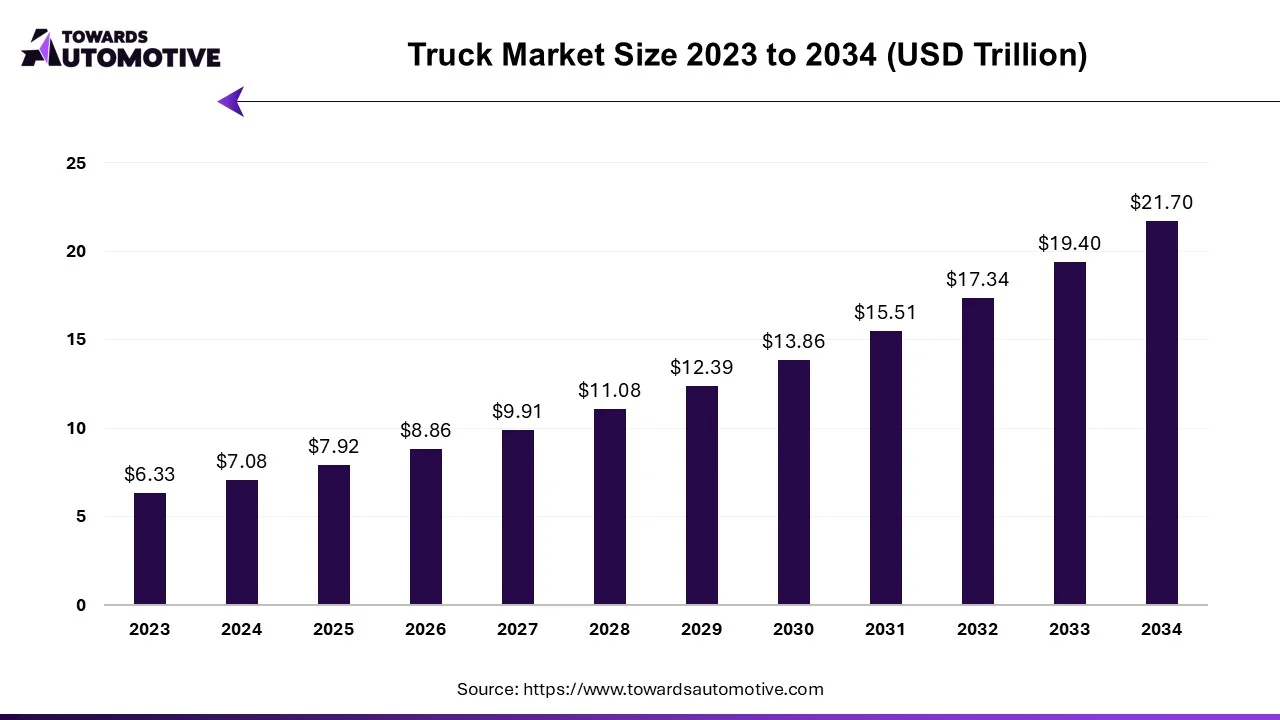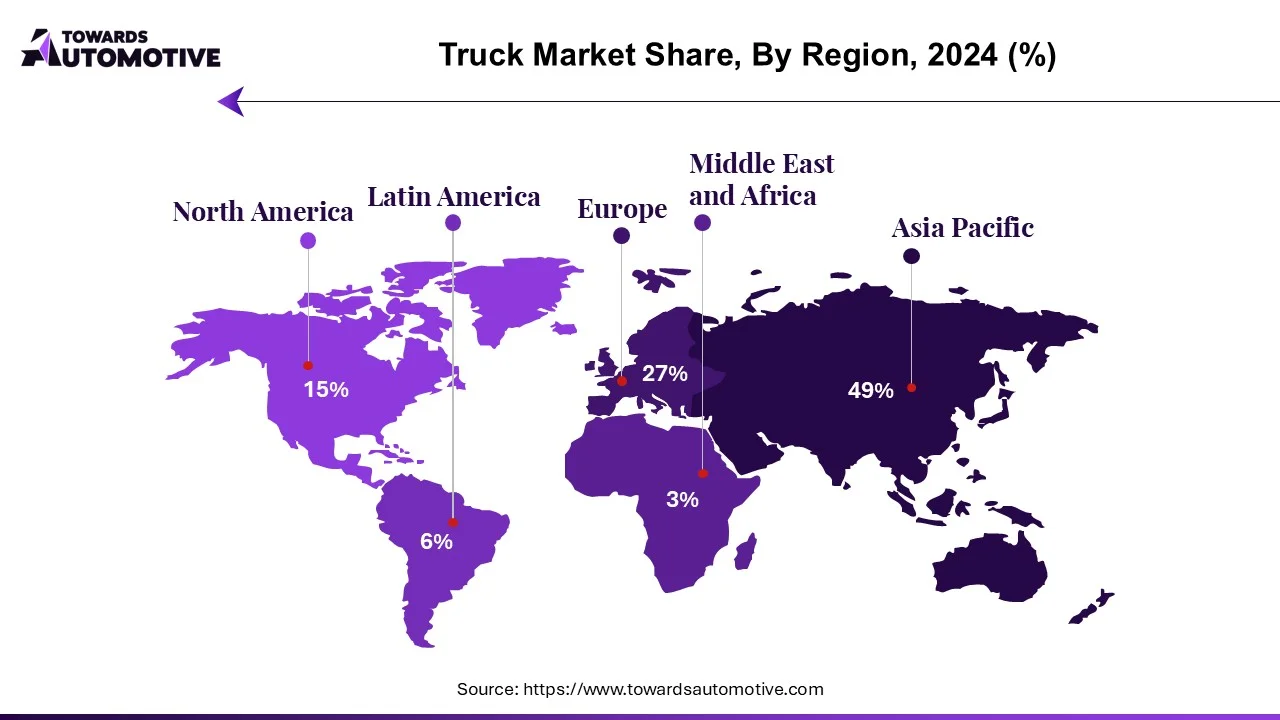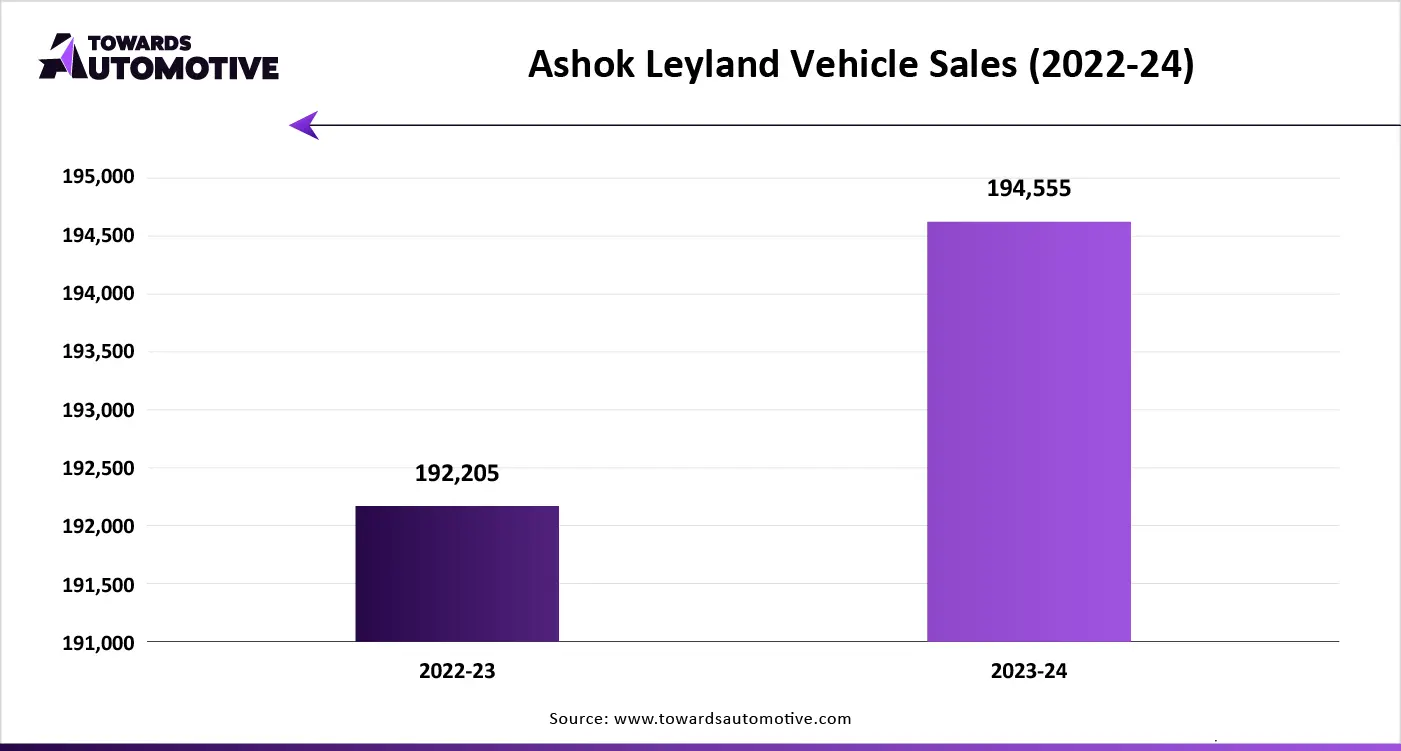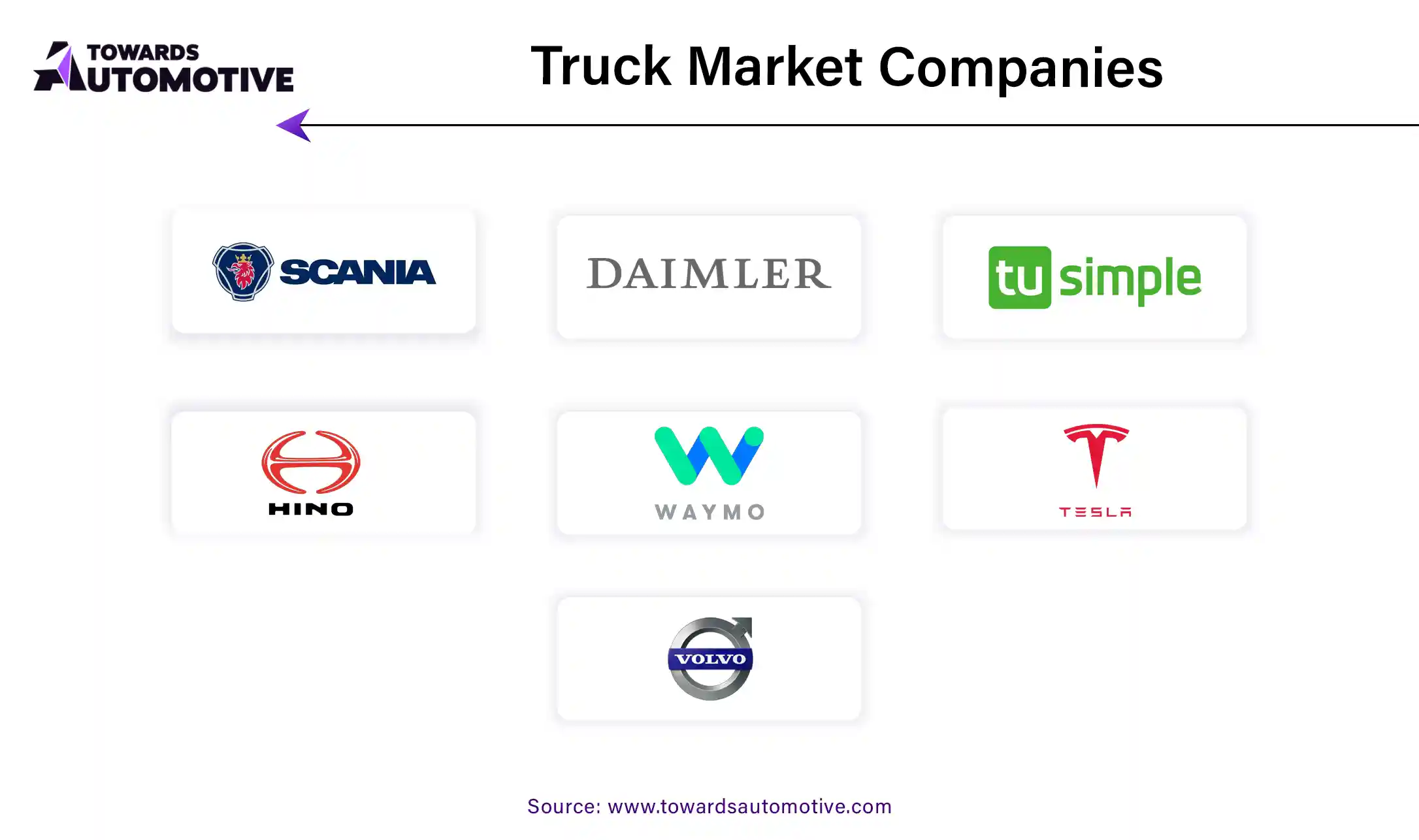August 2025
The truck market is forecast to grow at a CAGR of 11.85%, from USD 7.92 trillion in 2025 to USD 21.70 trillion by 2034, over the forecast period from 2025 to 2034. The growing demand for light-duty trucks from the e-commerce sector coupled with technological advancements in the automotive industry is playing a vital role in shaping the industrial landscape.
Moreover, the rapid adoption of electric trucks in the logistics sector along with rise in number of fleet operators has contributed to the market expansion. The research and development activities related to hydrogen trucks is expected to create ample growth opportunities for the market players in the future.

Unlock Infinite Advantages: Subscribe to Annual Membership
The truck market is a prominent branch of the commercial vehicle industry. This industry deals in manufacturing and distribution of trucks in different parts of the world. There are different classes of trucks available in the market comprising of class 3 trucks, class 4 trucks, class 5 trucks, class 6 trucks, class 7 trucks, class 8 trucks and some others. These trucks are powered by various propulsion technologies including gasoline, diesel, electric, natural gas, FCEVs and some others. It finds application in numerous end-user industries consisting of logistics & transportation, construction & infrastructure, retail & e-commerce, mining and some others. This market is expected to rise drastically with the growth of the automotive sector across the globe.
| Metric | Details |
| Market Size in 2025 | USD 7.92 Trillion |
| Projected Market Size in 2034 | USD 21.70 Trillion |
| CAGR (2025 - 2034) | 11.85% |
| Leading Region | Asia Pacific |
| Market Segmentation | By Class, By Propulsion, By Truck, By Application and By Region |
| Top Key Players | Ashok Leyland, Daimler Trucks, Dongfeng Motor, Ford, Isuzu |
The major trends in this market consists of partnerships, rise in number of trucking companies and rapid infrastructural development.
The diesel segment led the market. The growing demand for heavy-duty trucks from the logistics sector for transporting bulk goods has boosted the market expansion. Additionally, the rising sales of diesel-powered trucks in developed nations to cater the needs of the construction sector is playing a vital role in shaping the industrial landscape. Moreover, the technological advancements in diesel trucks is expected to drive the growth of the truck market.
The electric segment is expected to expand with the highest CAGR during the forecast period. The growing adoption of electric vehicles in several countries such as the U.S., Canada, China and some others for reducing vehicular emission is driving the market expansion. Also, numerous government initiatives to increase awareness about EV adoption coupled with technological advancements in powertrains is playing a vital role in shaping the industry in a positive direction. Moreover, rapid investment by market players for developing high-grade electric trucks is expected to boost the growth of the truck market.
The logistics & transportation segment dominated the market. The increasing adoption of hybrid trucks in the logistics sector with an aim reducing vehicular emission has boosted the market growth. Additionally, rapid investment by government of several countries for strengthening the logistics sector is playing a crucial role in shaping the industry in a positive direction. Moreover, partnerships among trucking companies and logistics brands is expected to propel the growth of the truck market.
The construction & infrastructure segment is expected to grow with the fastest CAGR during the forecast period. The rise in number of residential constructions in several countries such as India, China, the U.S., and some others has boosted the market growth. Also, rapid investment by government for developing the road infrastructure coupled with increasing consumer preference towards home renovation activities is contributing to the industrial expansion. Moreover, rising emphasis of automotive brands for developing heavy-duty trucks to cater the needs of the construction sector is expected to boost the growth of the truck market.

Asia Pacific led the truck market. The growing development in the mining sector and agricultural sector has increased the demand for heavy-duty trucks, thereby driving the market expansion. Additionally, rapid investment by government of several countries such as India, China, Japan and some others for strengthening the EV charging infrastructure coupled with rise in number of fleet operators is further adding to the industrial growth. Moreover, the presence of numerous market players such as Tata Motors, Ashok Leyland, Dongfeng Motors and some others is expected to boost the growth of the truck market in this region.
North America is expected to rise with a notable CAGR during the forecast period. The growing adoption of electric trucks in the U.S. and Canada for reducing vehicular emission has driven the market growth. Also, rising government initiatives aimed at developing the EV infrastructure along with rapid development in the e-commerce and logistics sector is positively contributing to the market. Moreover, the presence of various market players such as Ford, Kenworth, Navistar and some others is expected to drive the growth of the truck market in this region.
The truck market is a highly fragmented industry with the presence of several dominating players. Some of the prominent companies in this industry consists of Tata Motors, Toyota, Ashok Leyland, Daimler Trucks, Dongfeng Motor, Ford, Isuzu, Paccar, Scania, Volvo Group and some others. These companies are constantly engaged in developing different types of trucks and adopting numerous strategies such as joint ventures, partnerships, acquisitions, business expansions, launches, collaborations and some others to maintain their dominance in this industry.


By Class
By Propulsion
By Truck
By Application
By Region
August 2025
August 2025
August 2025
August 2025
We offer automotive expertise for market projections and customizable research, adaptable to diverse strategic approaches.
Contact Us